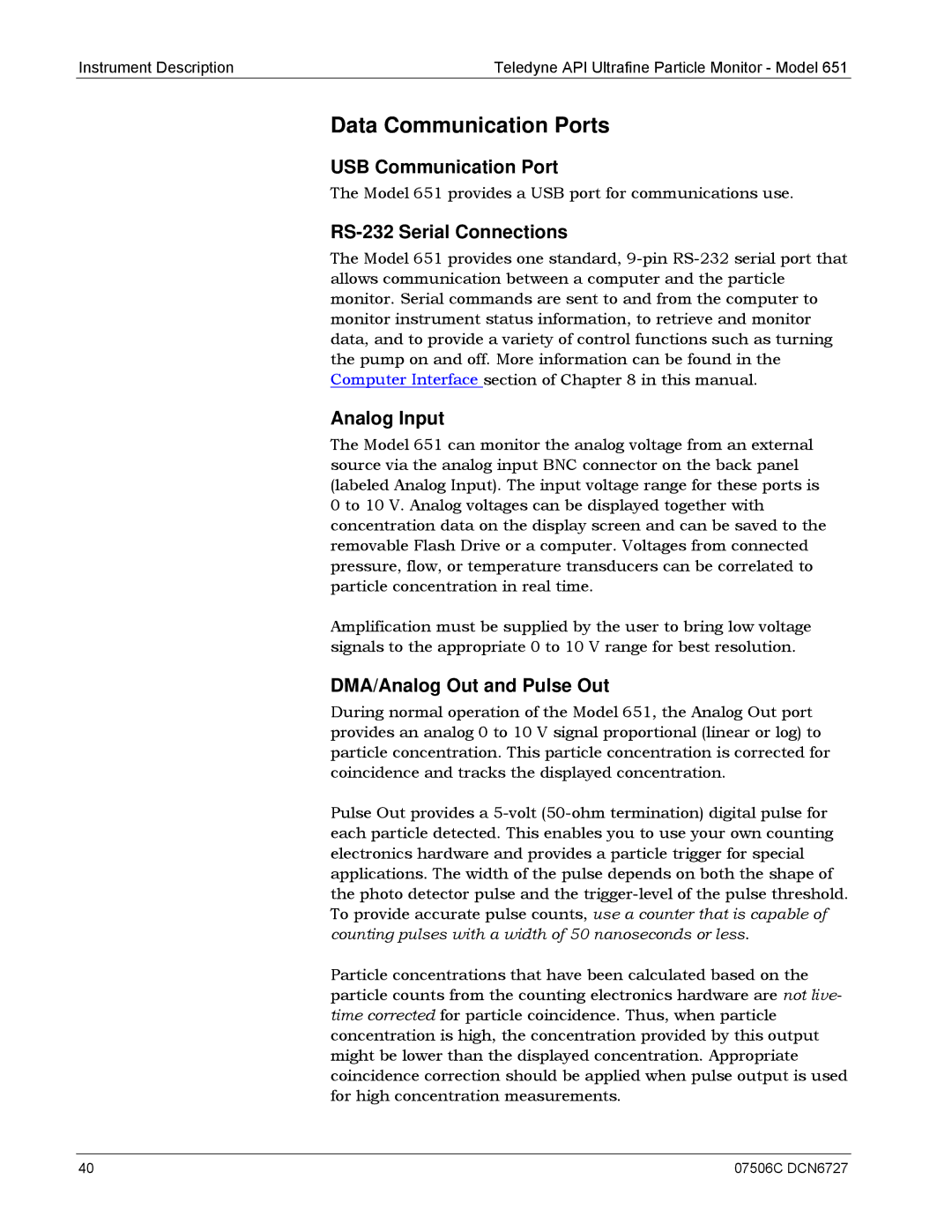Instrument Description | Teledyne API Ultrafine Particle Monitor - Model 651 |
Data Communication Ports
USB Communication Port
The Model 651 provides a USB port for communications use.
RS-232 Serial Connections
The Model 651 provides one standard,
Analog Input
The Model 651 can monitor the analog voltage from an external source via the analog input BNC connector on the back panel (labeled Analog Input). The input voltage range for these ports is 0 to 10 V. Analog voltages can be displayed together with concentration data on the display screen and can be saved to the removable Flash Drive or a computer. Voltages from connected pressure, flow, or temperature transducers can be correlated to particle concentration in real time.
Amplification must be supplied by the user to bring low voltage signals to the appropriate 0 to 10 V range for best resolution.
DMA/Analog Out and Pulse Out
During normal operation of the Model 651, the Analog Out port provides an analog 0 to 10 V signal proportional (linear or log) to particle concentration. This particle concentration is corrected for coincidence and tracks the displayed concentration.
Pulse Out provides a
Particle concentrations that have been calculated based on the particle counts from the counting electronics hardware are not live- time corrected for particle coincidence. Thus, when particle concentration is high, the concentration provided by this output might be lower than the displayed concentration. Appropriate coincidence correction should be applied when pulse output is used for high concentration measurements.
40 | 07506C DCN6727 |
